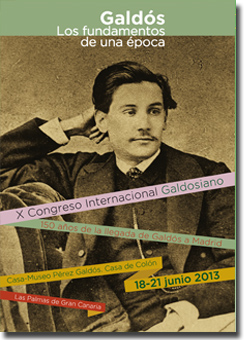GALDÓS Y EL GRAND TOUR: EL VIAJE A ITALIA / GALDÓS AND THE GRAND TOUR: THE JOURNEY TO ITALY
Palabras clave:
Literatura, Arte, Literatura de Viajes, Grand Tour, Literature, Art, Literature of travelResumen
El Viaje a Italia (1888) y su complemento, la “Escapatoria Otoñal” de Memorias de un desmemoriado (1916) permiten acercarnos al impacto que sobre Galdós produce una institución típicamente ochecentista: el Grand Tour. Galdós no sólo visita las ciudades que en canon ya había fijado como paso ineludible desde el Siglo xvii —Roma, Venecia, Florencia, Nápoles (Pompeya)— sino que incorpora a Verona para conocer la tumba apócrifa de Julieta. El viaje a Italia pone de manifiesto el vuelco que experimenta el gusto estético del escritor isleño y que deja su huella tanto en su esfera literaria —La Incógnita— como en su esfera más privada —estudio de Plaza de Colón—. Procesos estos que permiten que Galdós dé el salto a nuevas perspectivas estéticas en San Quintín (1893).
El viaje a Italia (1888) and its complement, the “Escapatoria Otoñal” from Memorias de un desmemoriado (1916) allows to approach to the impact that over Galdós produced the Grand Tour, a typical nineteenth century institution. Galdós does not only visit the cities that in canon had already set as unavoidable step since the 17th century —Rome, Venice, Florence, Naples (Pompeii)— but incorporates Verona to know the apocryphal tomb of Juliet. The trip to Italy highlights the overturn that experiments the aesthetic taste of the islander writer and leaves his mark both in his literary sphere —La Incógnita— and in his most private sphere —Plaza de Colon studio—. This process allows that Galdós takes the leap into new aesthetic perspectives in San Quintín (1893).




